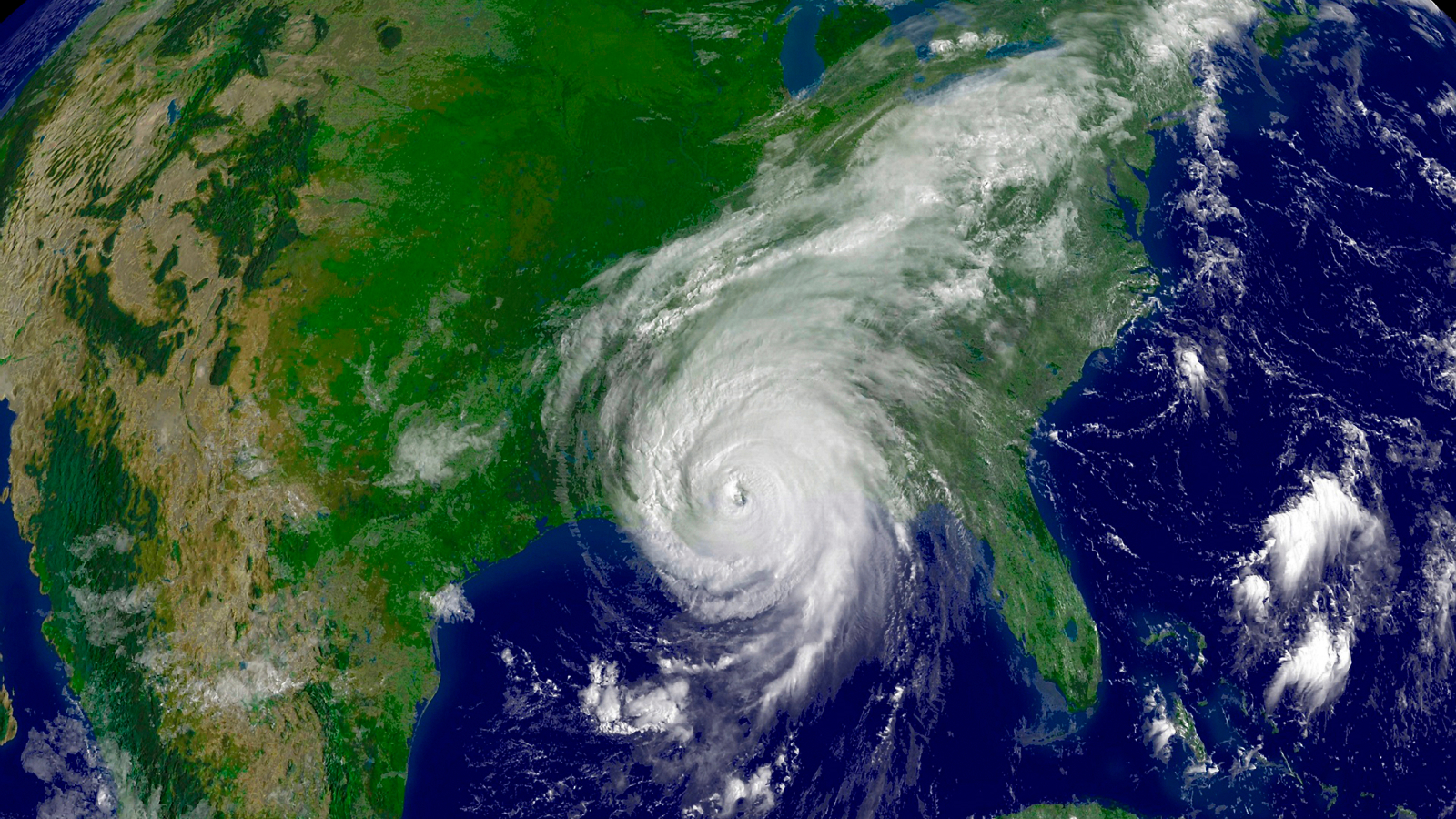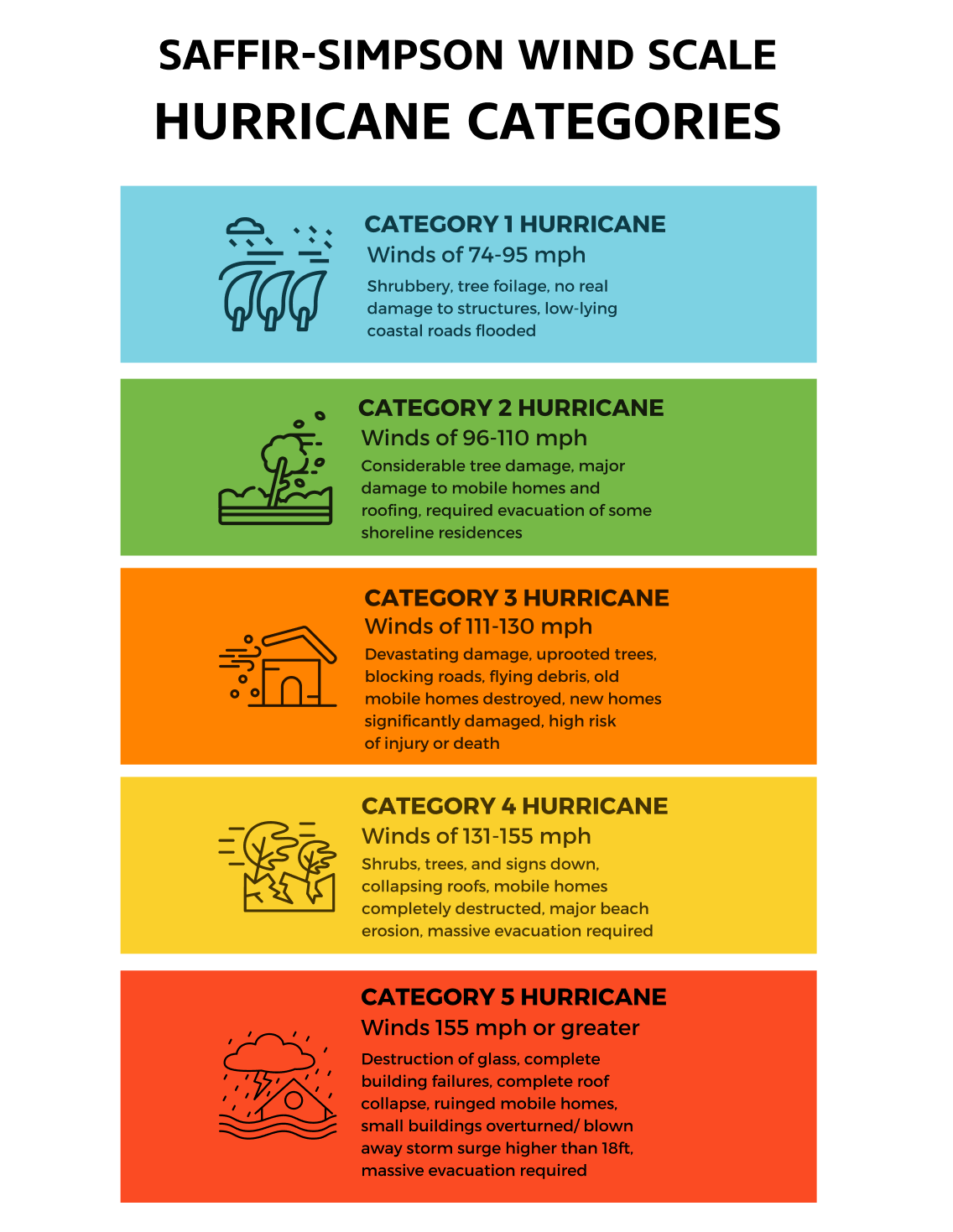Hurricane Categories: A Guide

In case you’re faced with a potentially devastating disaster like a hurricane, it’s good to prepare yourself for what’s to come. That includes knowing what to expect when you hear a hurricane is a Category 1, a Category 5, or any point in between.
The Saffir-Simpson Hurricane Wind Scale uses a rating scale of 1 to 5, based on a hurricane's continuous wind speed, to estimate potential property damage. The higher the rating, the more dangerous the hurricane — and the more increased potential for major damage and significant loss of life.
Here’s a list of the five hurricane categories and what to expect if one comes to your area.
Category 1 Hurricane
Hurricane Barry is an example of a Category 1 storm that hit Louisiana in 2019.
-
Winds of 74-95 mph
-
Damage primarily to shrubbery, tree foliage and unanchored mobile homes
-
No real damage to other structures
-
Some damage to poorly constructed signs
-
Storm surge four to five feet above normal
-
Low-lying coastal roads flooded
-
Minor pier damage
-
Small craft in exposed anchorages torn from moorings
Category 2 Hurricane
Hurricane Rita was a very intense Category 2 hurricane that caused significant damage to the Gulf Coast in 2005.
-
Winds of 96-110 mph
-
Considerable damage to tree foliage, some trees down
-
Major damage to exposed mobile homes
-
Extensive damage to poorly constructed signs
-
Some damage to roofing
-
Storm surge six to eight feet above normal
-
Coastal roads and low-lying inland escape routes blocked by rising water
-
Considerable damage to piers
-
Marinas flooded
-
Small crafts in unprotected anchorages torn from moorings
-
Required evacuation of some shoreline residences and low-lying islands
Category 3 Hurricane
Hurricane Katrina was a Category 3 storm with winds near 127 mph, causing severe flooding damage in cities from New Orleans, Louisiana to Biloxi, Mississippi.
-
Winds of 111-130 mph
-
Devastating damage
-
Many trees snapped or uprooted, blocking roads
-
Flying and falling debris
-
High risk of injury or death to people, livestock and pets
-
Nearly all older mobile homes destroyed
-
Newer mobile homes may experience significant damage
-
Major damage to frame homes, apartments and industrial buildings
-
Electricity and water unavailable for several days to weeks after storm passes
Category 4 Hurricane
Hurricane Ike was a Category 4 hurricane that caused catastrophic damage to the Bahamas, Haiti and the United States. It’s the third most damaging storm in U.S. history.
-
Winds of 131-155 mph
-
Shrubs and trees down, all signs down
-
Extensive damage to roofing, windows and doors
-
Roof collapse
-
Complete destruction of mobile homes
-
Storm surge 13 to 18 feet above normal
-
Flat terrain 10 feet or less above sea level flooded inland as far as six miles
-
Major damage to lower floors of structures near shore due to flooding, waves and floating debris
-
Low-lying water three to five hours before hurricane center arrives
-
Major erosion of beaches
-
Massive evacuation may be required for all residences within 500 yards of shore
-
Possible evacuation of single-story residences on low ground within two miles of shore
Category 5 Hurricane
Hurricane Andrew was a Category 5 storm that hit South Florida in 1992 with wind speeds of 165 miles per hour. Total damages from Andrew exceeded 25 billion dollars.
-
Winds greater than 155 mph
-
Shrubs and trees down, considerable damage to roofing, all signs down
-
Severe and extensive damage to windows and doors
-
Complete roof collapse
-
Destruction of glass in windows and doors
-
Some complete building failures
-
Small buildings overturned or blown away
-
Complete destruction of mobile homes
-
Storm surge higher than 18 feet above normal
-
Major damage to lower floors of all structures less than 15 feet above sea level and within 500 yards of shore
-
Low-lying escape routes inland cut off by rising water three to five hours before hurricane center arrives
-
Massive evacuation may be required for residential areas on low ground within five to 10 miles of shore
While a standard homeowners’ insurance policy can cover wind storm damage from a hurricane, it doesn’t cover flooding. For more information on flood insurance contact your local Alfa® agent. Contact your local Alfa agent today to learn more.
All coverages are subject to deductibles and policy limits. This is not an insurance policy. It is intended only to provide a general description of Alfa Insurance® and/or its product lines and services. An actual policy contains the specific details of the coverages, conditions and exclusions.
